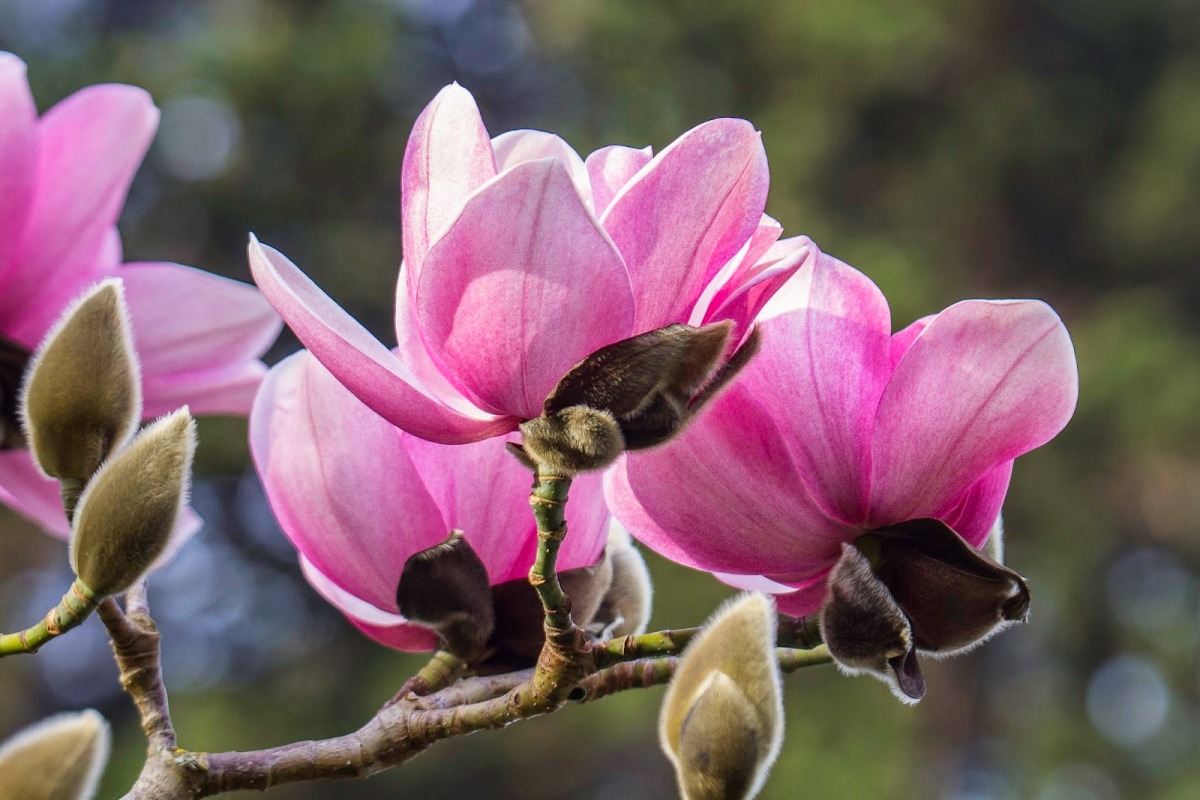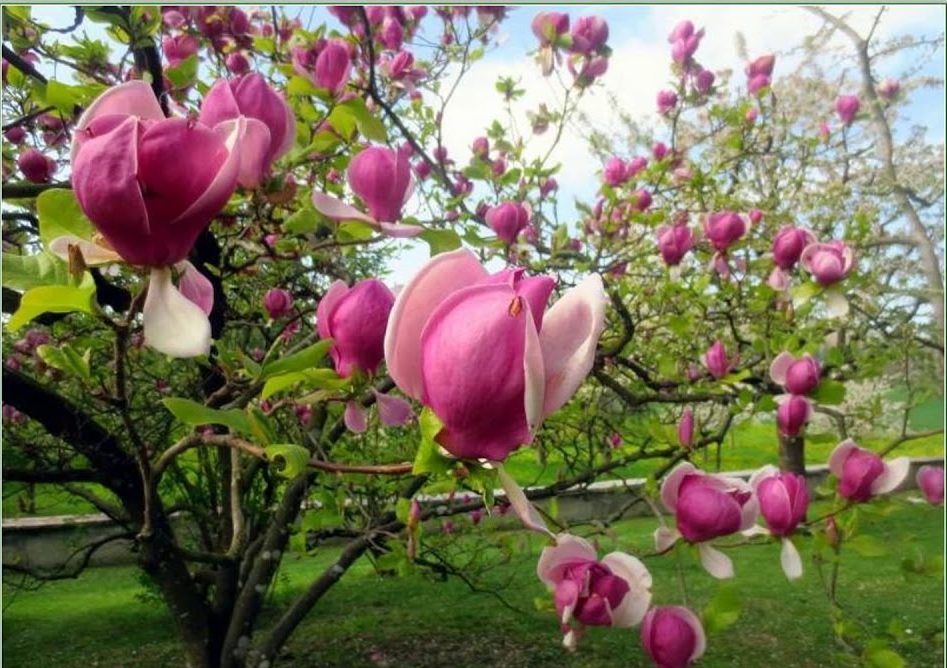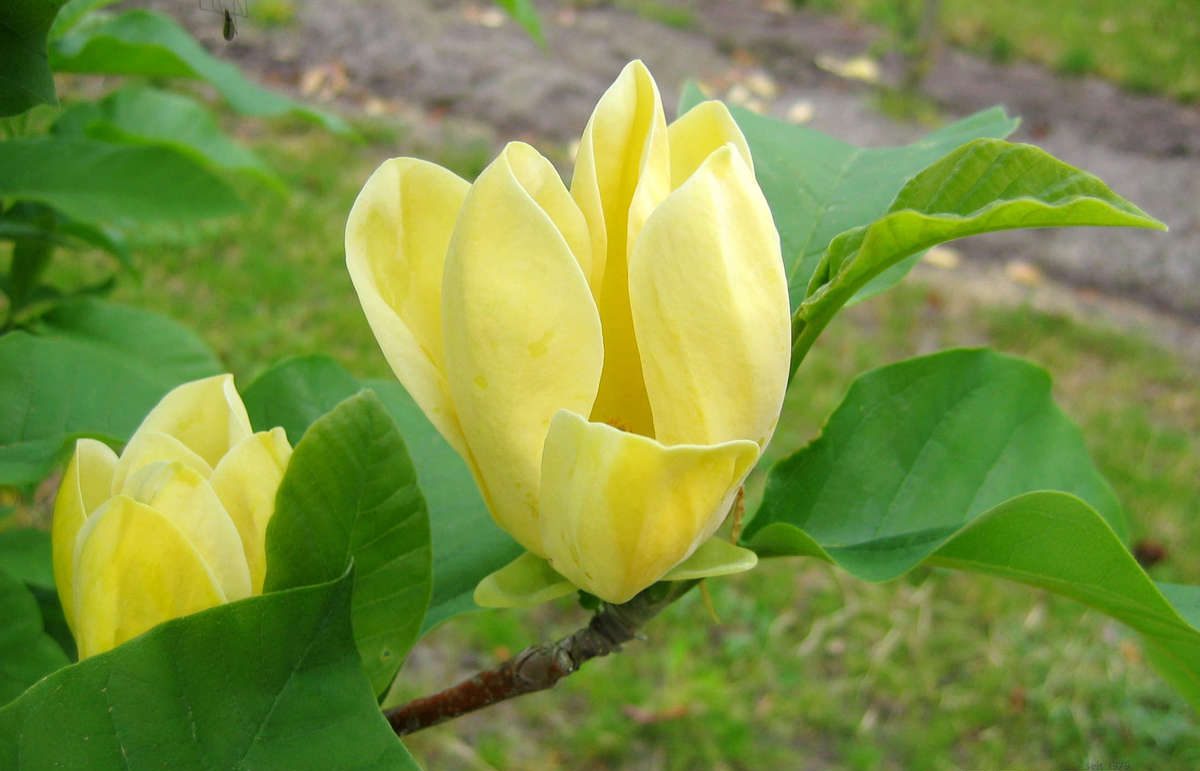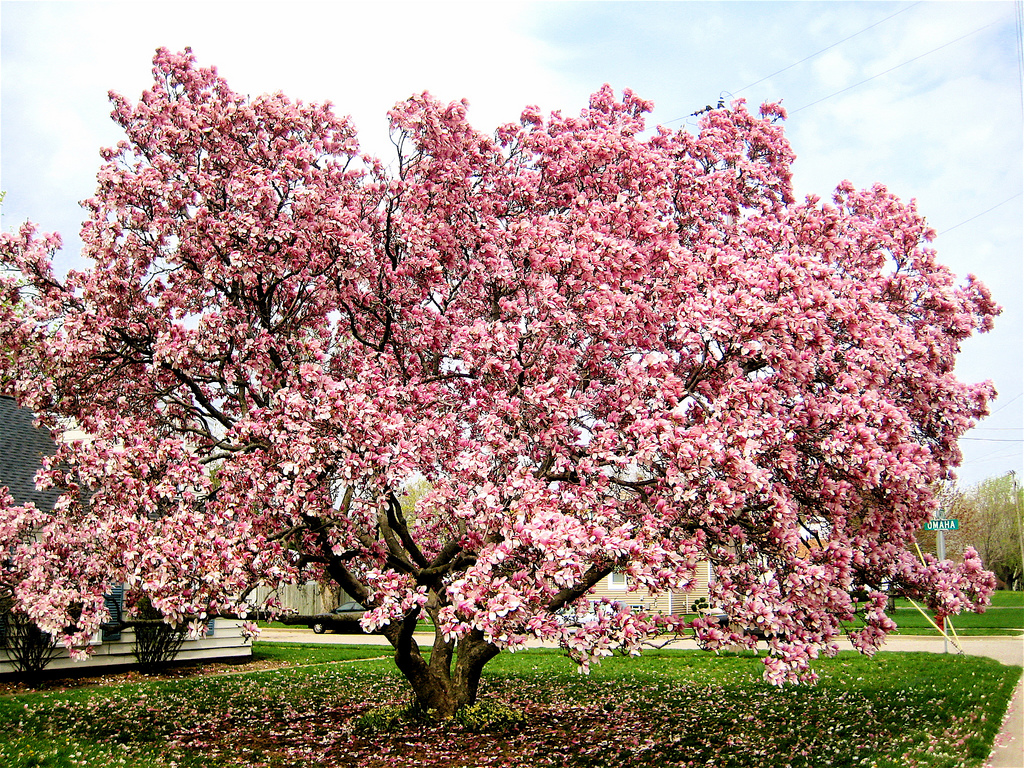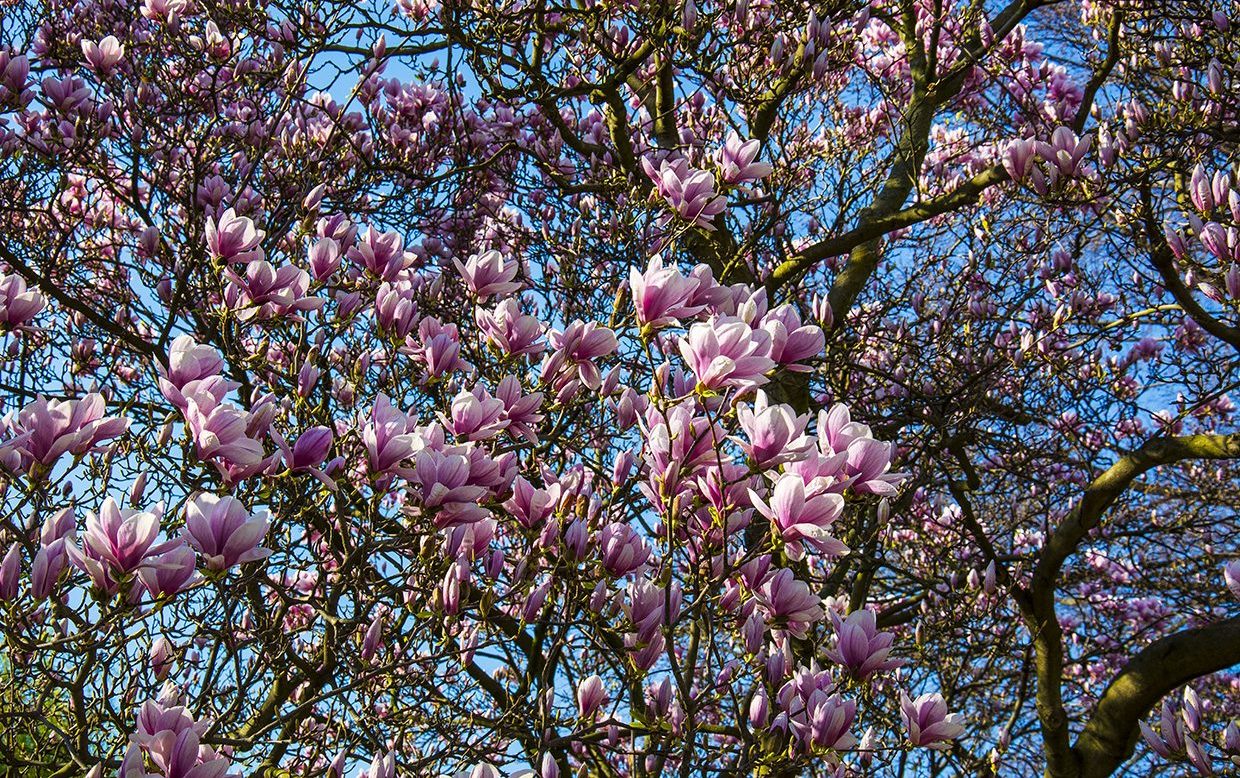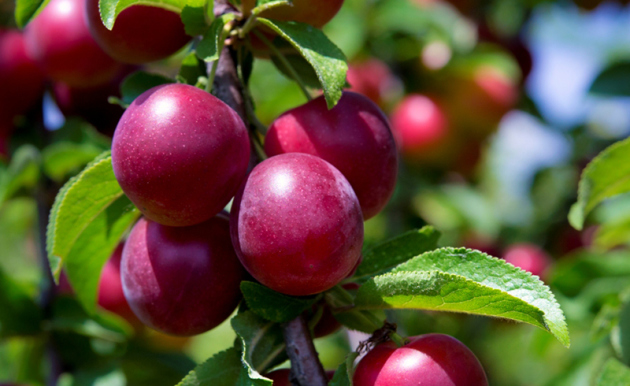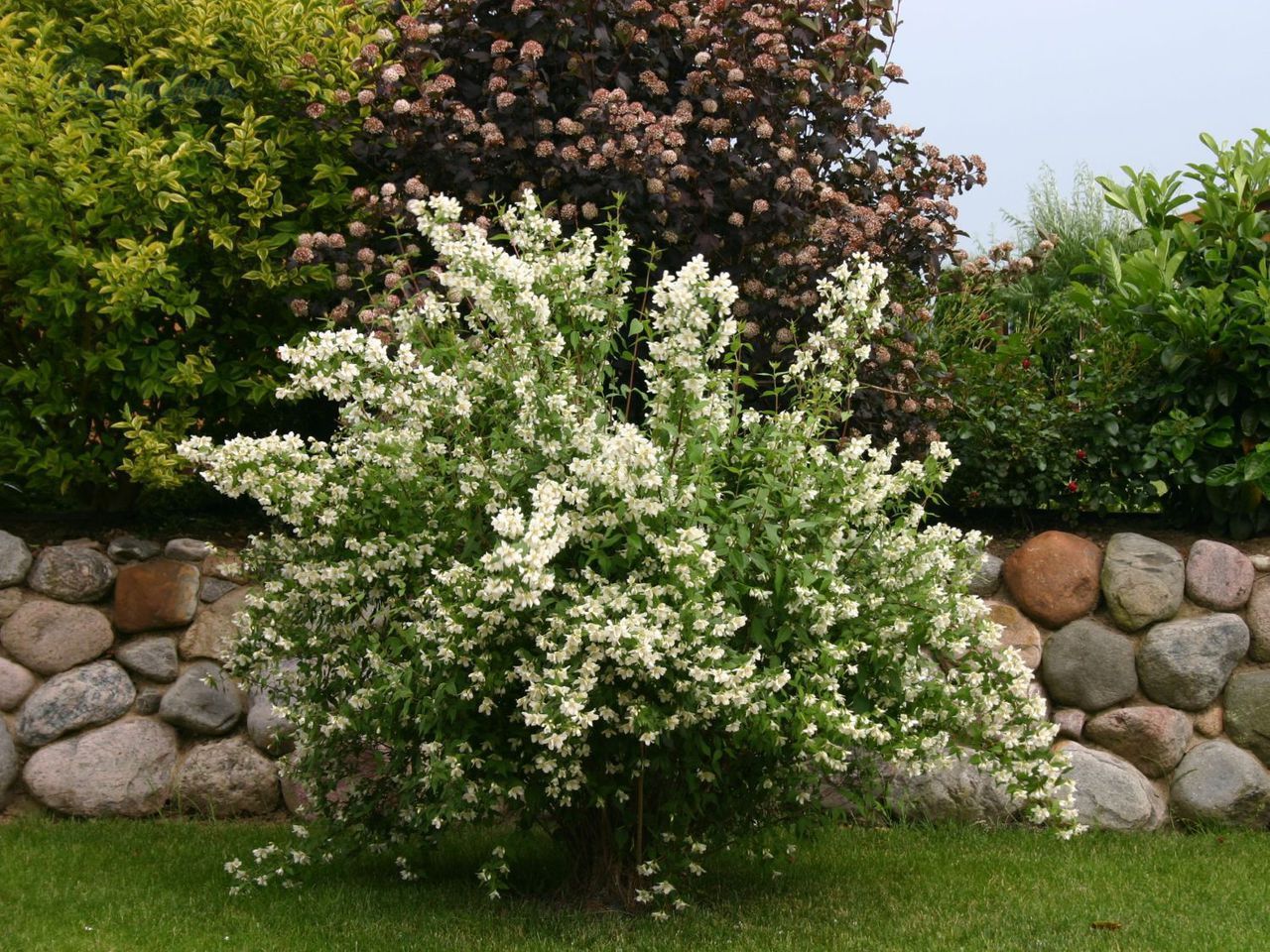Content:
Blooming magnolia evokes genuine charm and affection for any person. The beauty of the luxurious and delicate bud is associated with an airy orchid, whose flowers are similar to magnolia. Its history began as early as 140 million years BC, in those ancient times, when herds of wild dinosaurs roamed the earth. New varieties of magnolia plants have appeared over the millennia.
Description and origin story
Until the 18th century, nothing was known about magnolia in Europe. The plant grew in North America in river valleys and humid forests. At the beginning of the 19th century, the famous French traveler and botanist Charles Plumier brought from America a sample of an amazing tree with huge flowers and an incredible aroma.
Description of the botanical "portrait" of magnolia:
- Evergreen or deciduous tall shrub or tree;
- The bark of the tree is ash gray or brown. The texture of the bark can be smooth, in the form of scales or in small grooves;
- Leaves are dark green, large, rounded oval;
- Magnolia flowers are bisexual, large in size, white, cream or pink with a strong aroma;
- After flowering, the seed fruit is formed in the form of a gut-shaped composite leaflet with triangular black seeds. The fruits are decorative and attractive.
With the beginning of warm days, fragrant magnolia flowers bloom, which are so prized for their unforgettable beauty and aroma. In addition, flowers, foliage and fruits contain a large amount of essential oils used as an antiseptic, as well as for various diseases of internal organs.
Varieties and varieties
Currently, 210 varietal species of the magnolia family are registered in the botanical registers, which are divided into the following groups:
- Deciduous plants. Trees, like all other common plants, shed their foliage in the fall. Representatives of this group are better adapted to the winter cold.
- Evergreens. Plants of the second group are absolutely not adapted to low temperatures and greenhouses and greenhouses are needed to grow them in a different climate.
Magnolia flower is primarily appreciated for its exquisite beauty and fragrant aroma of flowers, its decorative effect. All flowering plants are very beautiful and very different. Magnolias differ by varieties.
The following types are in the popularity rating of varietal varieties of magnolias:
- Magnolia tulip (Latin name - Magnolia x soulangiana). Originally grown in the southern regions of France. A hybrid shrub variety, reaching heights of up to 5 meters in the southern regions. Tulip magnolia is deservedly considered the "queen" among flowering plants. The plant owes its leadership to unusually large flowers, reaching up to a quarter of a meter in diameter. The shape of the flowers is goblet, the petals are of various colors: from pale pink to red-purple. Occasionally there are specimens with white petals. The leaf of the tree is slightly elongated, obovate, up to 15 cm long. The plant blooms even when there is no foliage yet, or at the same time with them. The method of reproduction is planting stratified seeds, cuttings or lateral shoots of plants. After flowering, fruits appear on the branches, in the form of prefabricated leaflets of pink-purple shades.The plant is best planted in light or slightly shaded areas. The seedling should be protected from drafts;
- Magnolia stellate (Latin name - Magnolia stellata (Sieb. Et Zucc.) Maxim). The native habitat is Japan. This plant variety has entered the leading group of magnolia-shaped plants, thanks to its graceful attractive appearance. Blooming magnolia is ideal for solo and group landscaping. A small deciduous tree, up to 2.5 meters high, and with a spherical crown with brown-gray branches. Young shoots with buds are covered with thick fluffy hairs. The leaf resembles an elongated ellipse and grows up to 12 cm long. The peculiarity of this variety is the numerous white flowers in the form of stars, elongated in different directions with ribbons. The maximum flower diameter reaches 10 cm. Flowering is distinguished by a special duration and begins long before the first leaves appear. Fruits - seed capsule of red-coral shade;
- Magnolia Kobus (Latin name - Magnolia kobus DC.). Homeland - river valleys of mountain rivers in Japan and South Korea. The most suitable plant variety for central Russia. Kobus is considered the most frost-resistant and fast-growing plant adapted for the European part of Russia. The tree belongs to deciduous crops with a rounded spherical roof with bare thin shoots. In the wild, the tree can grow up to 25 meters, and cultivated plants up to 10 meters. When grown in northern regions, Kobus magnolia looks more like a large shrub. The bark color is dark gray with grayish brown branches. On the front side, the leaves are bright green, the bottom color changes to a lighter one. The plant blooms with fragrant milky-white flowers, reaching a diameter of up to 10 cm.This variety is well suited for growing in urban conditions, where there is a high level of dust and gas pollution. A tree can bloom only at the age of 8 to 15 years;
- Magnolia grandiflora (Latin name - Magnolia grandiflora L.). The native area is the southeastern states of North America. In the European part of Russia, it is the most valuable exotic tree species. It is valued for its very fragrant, large flowers of bright color, reaching a diameter of 25 cm, which effectively stand out against the background of shiny dark green foliage. After flowering, the large-flowered magnolia is adorned with spectacular cone-like fruits. This variety has a tall, slender trunk with a pyramidal crown. The height of an adult tree reaches 35 meters;
- Magnoliabrooklyn. The variety is known as the Sun Spire or Yellow Magnolia. A real "aristocrat" with spectacular large flowers of a pure yellow hue, which seem to soar above the dark green foliage and invite everyone around to admire the enchanting flowering. Yellow magnolia grows as a vertically growing shrub or tree, with a height of 3 to 4 m. The crown width is up to 2 m. The plant begins to bloom simultaneously with the opening of the leaves. Sunny, open areas with light shade are best for planting trees. The plant is suitable for humus, well-moistened soils. The variety tolerates winter cold well;
- Pointed magnolia (Latin name - Magnolia acuminate). This variety is known as the Cucumber Tree. The variety owes its unusual name to small fruits that resemble the well-known cucumbers in shape. But, unlike the green "their fellows", the fruits of the cucumber tree have a red color. In the natural environment, the tree grows in mountainous areas, in deciduous forests, on the banks of mountain rivers and reaches gigantic sizes. There are specimens with a height of 30 meters and a spreading crown of the same size. After the leaves bloom, the plant is covered with numerous large up to 8 cm flowers in the form of a greenish-yellow bell. The tree grows well in moist soils. Acidic and alkaline soil is suitable. The variety is frost-resistant and grows rapidly.
All of the listed representatives of the Magnolia family are very decorative and are valued for the unforgettable beauty of flowering. Magnolia is also prized for its essential essential oils present in its ripe fruits, green foliage and fragrant flowers. In medicine, oils are used as a natural antiseptic for diseases of the digestive system, hypertension and rheumatism. The fruits of the plant are of great medicinal value. They contain fatty oils with a whole range of unsaturated acids: peanut, linolenic, steraric and other useful substances. Bark, leaves, flowers, fruits - all these wonderful gifts of magnolia are traditionally used for medicinal purposes.
Planting, growing and care
In order for a planted magnolia tree to bloom and turn into a blooming beauty, home gardeners need to follow simple agrotechnical rules for growing this beautiful plant.
Step-by-step landing instructions:
- In early spring, magnolia seedlings are planted in prepared pits measuring 100x100x100 cm;
- The pits are filled with nutrient soil with the constituent components of peat, sand and turf in a ratio of 2: 0.5: 1;
- Saplings are very fond of moisture, but it is not recommended to get carried away with excessive watering;
- After planting and watering, the seedlings mulch and periodically loosen the soil.
The first year the plant gives a weak growth, and only by July the first leaves appear, in August-September, a more active growth of the seedling is observed.
In winter, the tree should be covered with spruce branches or wrapped in burlap. This is done so that flower buds and young branches are not damaged.
For magnolias, formative pruning is contraindicated, the plant loses its decorative effect and takes a long time to recover. For sanitary pruning, it is necessary to remove dry damaged branches and the places of cuts must be covered with garden pitch.
The next spring, the seedlings are "fed" with organic fertilizers with the addition of urea and ammonium nitrate, diluted in water. Magnolia is a moisture-loving plant, the watering rate for each tree is 40 liters. The plant loves loose soil, therefore, the soil of the trunk circle is loosened to a depth of 20 cm and must be mulched with peat or compost.
Such simple agrotechnical methods for growing magnolia will be the key to the successful growth of this beautiful and amazing plant.
A gardener can admire the first magnolia flowers in a few years. A plant planted with seeds can bloom in 10-14 years, hybrid varieties will delight with their flowering at 4 or 5 years of age.
Diseases and pests
Various rodents bring great harm to magnolias: moles and mice. They destroy the plant's root system and undermine its roots. If the trunk is damaged, the wound is treated with a solution of foundation.
If the plant is damaged by spring frosts, gray rot may appear on the leaves. Another disease is powdery mildew, which affects young leaves. The affected leaves must be removed, and the plant itself must be treated with copper preparations.
